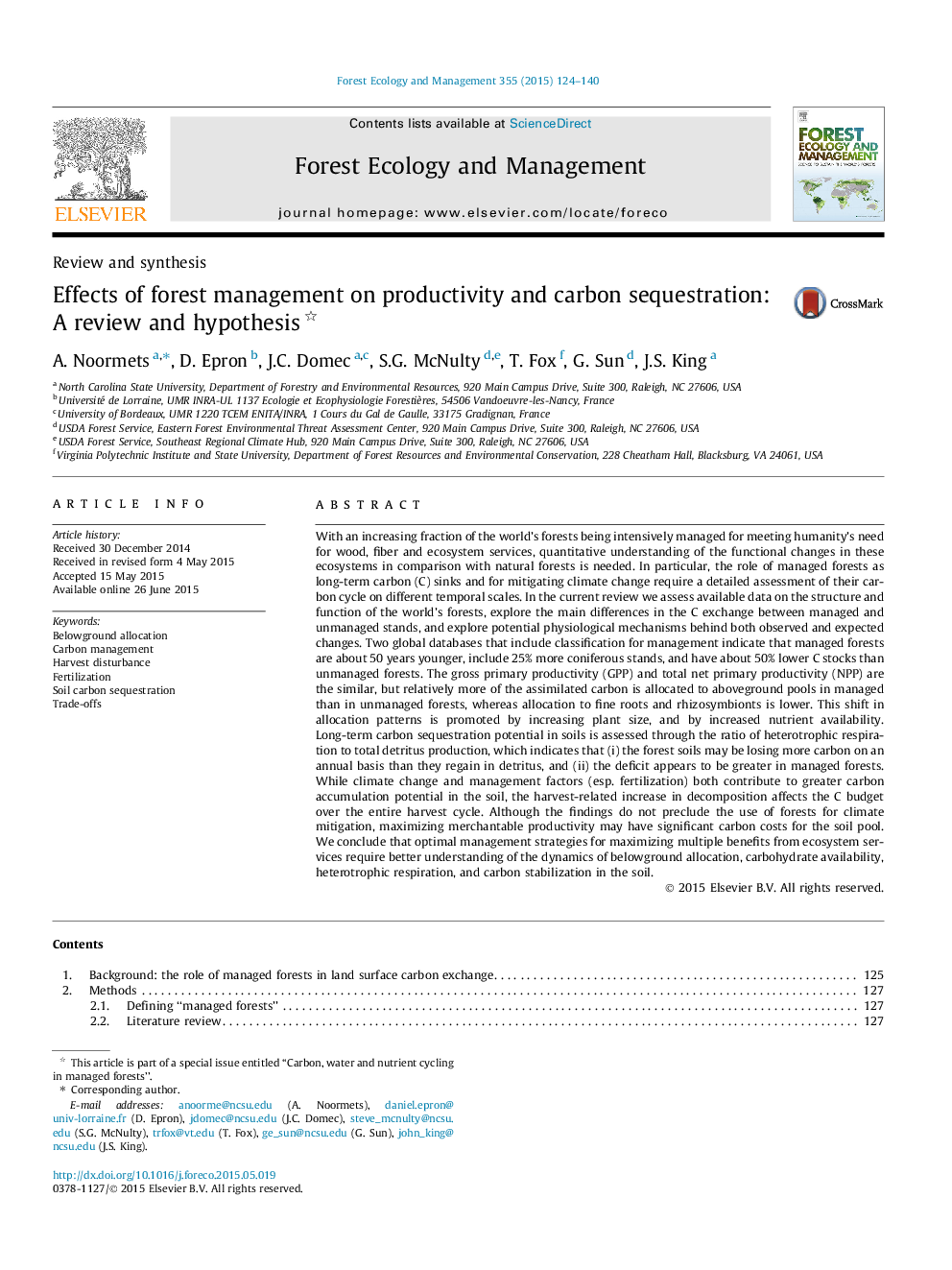| کد مقاله | کد نشریه | سال انتشار | مقاله انگلیسی | نسخه تمام متن |
|---|---|---|---|---|
| 86104 | 159165 | 2015 | 17 صفحه PDF | دانلود رایگان |
• Managed forests are 50 years younger and have 50% lower C stocks than unmanaged.
• Management factors shift allocation from fine roots and symbionts to woody biomass.
• Many forest soils have a negative annual carbon balance, more so in managed forests.
• Harvest disturbance has long-lasting effects on soil carbon decomposition.
• Managing forests for productivity or C sequestration requires different approaches.
With an increasing fraction of the world’s forests being intensively managed for meeting humanity’s need for wood, fiber and ecosystem services, quantitative understanding of the functional changes in these ecosystems in comparison with natural forests is needed. In particular, the role of managed forests as long-term carbon (C) sinks and for mitigating climate change require a detailed assessment of their carbon cycle on different temporal scales. In the current review we assess available data on the structure and function of the world’s forests, explore the main differences in the C exchange between managed and unmanaged stands, and explore potential physiological mechanisms behind both observed and expected changes. Two global databases that include classification for management indicate that managed forests are about 50 years younger, include 25% more coniferous stands, and have about 50% lower C stocks than unmanaged forests. The gross primary productivity (GPP) and total net primary productivity (NPP) are the similar, but relatively more of the assimilated carbon is allocated to aboveground pools in managed than in unmanaged forests, whereas allocation to fine roots and rhizosymbionts is lower. This shift in allocation patterns is promoted by increasing plant size, and by increased nutrient availability. Long-term carbon sequestration potential in soils is assessed through the ratio of heterotrophic respiration to total detritus production, which indicates that (i) the forest soils may be losing more carbon on an annual basis than they regain in detritus, and (ii) the deficit appears to be greater in managed forests. While climate change and management factors (esp. fertilization) both contribute to greater carbon accumulation potential in the soil, the harvest-related increase in decomposition affects the C budget over the entire harvest cycle. Although the findings do not preclude the use of forests for climate mitigation, maximizing merchantable productivity may have significant carbon costs for the soil pool. We conclude that optimal management strategies for maximizing multiple benefits from ecosystem services require better understanding of the dynamics of belowground allocation, carbohydrate availability, heterotrophic respiration, and carbon stabilization in the soil.
Journal: Forest Ecology and Management - Volume 355, 1 November 2015, Pages 124–140
